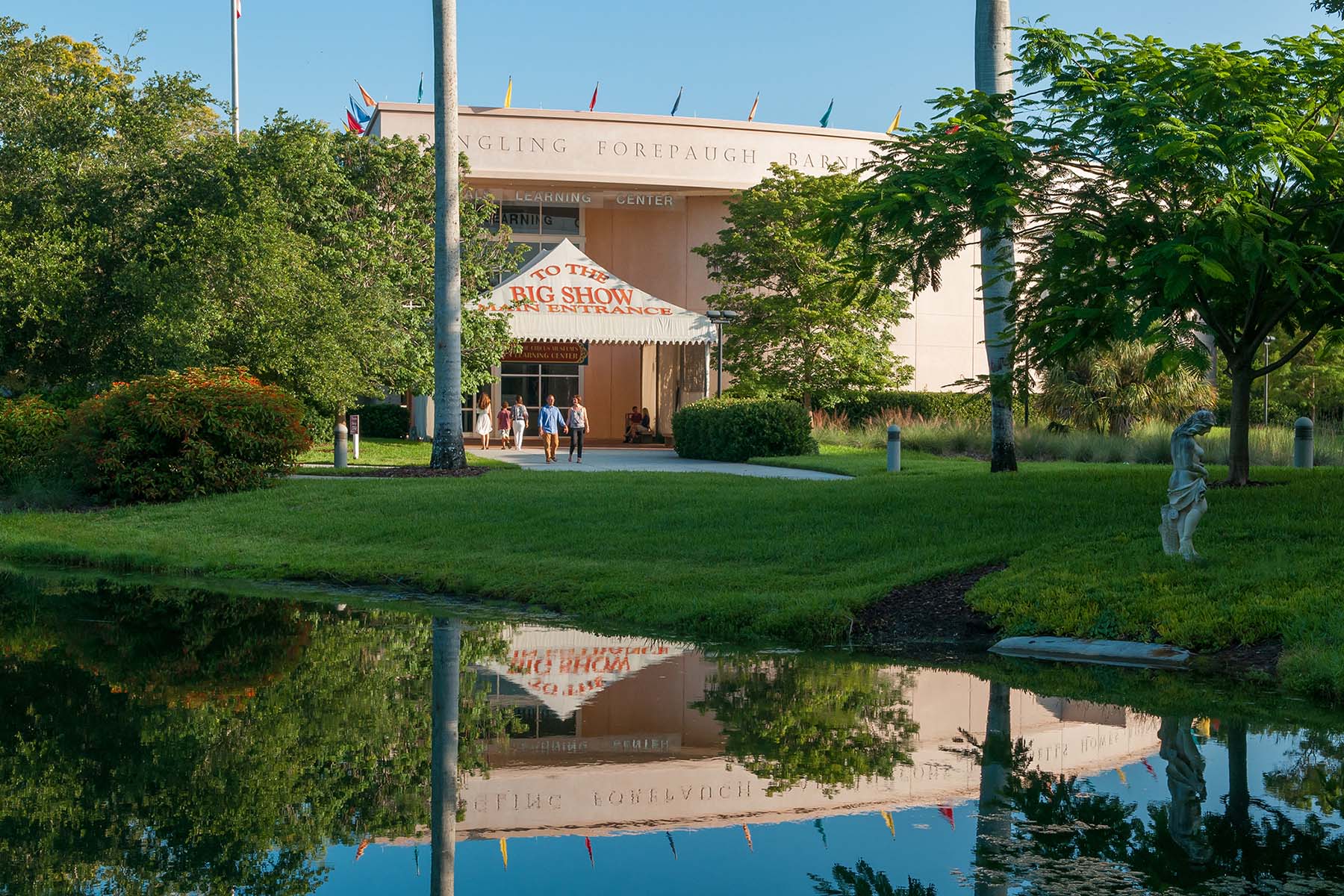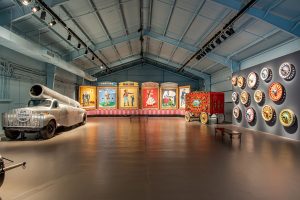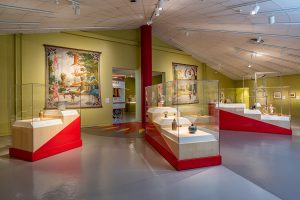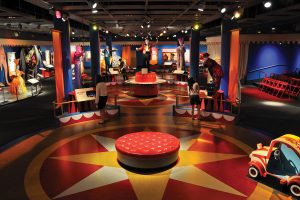FSU alumna opens exhibit as Tibbals Curator of The Ringling’s Circus Museum
BY: ANNA PRENTISS , JAMIE RAGER

Jennifer Lemmer Posey is now the Tibbals Curator of Circus at The John and Mable Ringling Museum of Art’s Circus Museum. (The Ringling)
A former graduate student of Florida State University’s Department of Art History is now the Tibbals Curator of Circus at The John and Mable Ringling Museum of Art’s Circus Museum and is leading the creation of a new permanent gallery space that highlights the contemporary era of circus.
Jennifer Lemmer Posey is the lead curator of the museum’s “Greatest Show on Earth Gallery,” which opens Saturday, April 6, featuring interactive exhibits and a behind-the-scenes look at how circus performances are planned, intricate costumes and more. As the State Art Museum of Florida and part of Florida State University, The Ringling fulfills an important educational mission by offering formal and informal programs of study serving as a major resource for students, scholars and lifelong learners of every age within the region, across the country and around the world.
“The exhibit features a theater that combines a video with real props to simulate the feeling of being at a live circus show,” Lemmer Posey said. “We can’t give people live performance every day all the time at the museum, however, this exhibit creates a moment of wonder and a reminder of the experience of going to the circus.”
Lemmer Posey worked closely with Feld Entertainment® to acquire objects and digital content while managing a team of design specialists from London to develop the experience. Her writing on various circus-related topics has appeared in books such as “The American Circus” and “Bandwagon” and the journal of the Circus Historical Society, for which she has been editor.
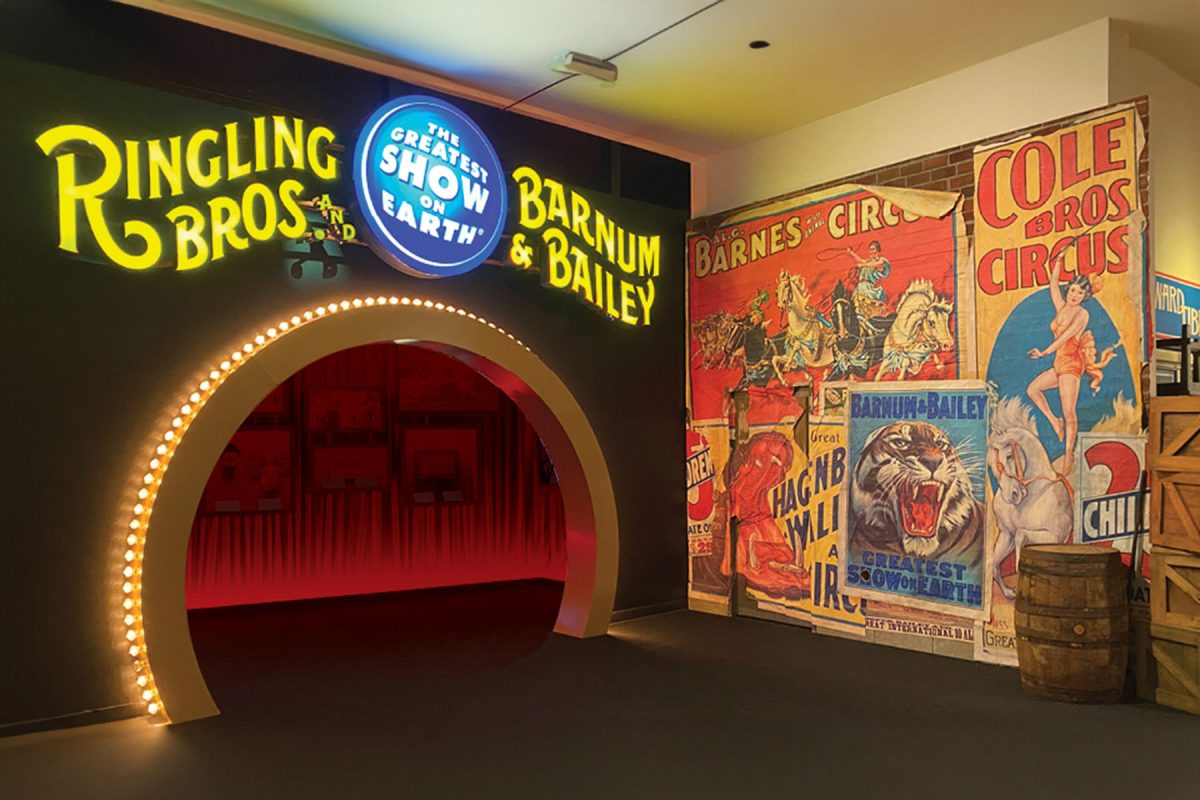
The arched entrance to The Greatest Show On Earth Gallery is crowned by a brightly lit Ringling Bros. and Barnum & Bailey sign, an artifact donated by Feld Entertainment Inc., that traveled across the country with the touring show. (The Ringling)
“Jennifer was critical to the development of our newest experience at the Circus Museum, ‘The Greatest Show on Earth,’” said Stephen High, director of The Ringling.
“This is just one example of how Jennifer has taken on significant projects to elevate the status of our Circus Museum.”
As a graduate student, Lemmer Posey worked closely with Howard Tibbals, whose love for the circus led to a lifetime devoted to collecting and preserving the history of America’s first major popular entertainment. She didn’t know that the position would be the beginning of a more than two-decade career at the museum or that it would make her one of the nation’s leading experts in the circus arts.
“Howard was very kind,” she said. “He had loved the circus from the time that he was a child, fascinated by the logistics, stories and how the tented circus happened.”
Tibbals, who gave his name to the museum’s building, catalogued his collection of circus memorabilia and helped install the famous 3,800-square-foot Howard Bros. Circus model — one of the museum’s most popular attractions that gives visitors a birds-eye view of an early 20th century traveling circus.
“I feel like Howard’s passion is infused in the work that I do,” she said. “I couldn’t have fallen in love with this subject in the same way if it hadn’t been for the love that he showed. I am fortunate to work with the whole circus community and the community of collectors, but Howard certainly stands apart.”
Lemmer Posey continues to support FSU by serving as an adviser and mentor to students of the Department of Art History’s Museum and Cultural Heritage Studies Ringling Course. Students spend their second year of study at The Ringling and work closely with staff from across the organization, with some even curating exhibits at the Circus Museum with guidance from Lemmer Posey and her team.
For more information, visit Ringling.org and ArtHistory.fsu.edu/MCHS.
In an interview, Lemmer Posey reflected on her career at The Ringling and how she is learning more about what it’s like to work with the circus community.
Q: How did you get your start at The Ringling and the Circus Museum?
A: At the time, I was getting my master’s in art history at FSU. The university had just taken on management of The Ringling, so a group of graduate students were fortunate enough to be the first summer intern class here. At that point I was very interested in folk art— I was drawn to communities that make art together. So, while the Baroque collection of the art museum is amazing, it wasn’t really my thing.
So, I asked to work at the Circus Museum. I didn’t know a thing about circus, but they let me do it. At the time, they were celebrating the fiftieth anniversary of the Cecil B. Demille film, “The Greatest Show on Earth,” so one of my very first projects was to go out and interview circus performers.
Q: What’s it like to work so closely with the circus community?
A: The circus community is so warm and welcoming,but at the same time, you have to earn their trust to get to the next level because they’re really close-knit. . It’s amazing to get to have conversations with these people who fly on the trapeze— people who can make an auditorium full of people laugh. In my experience, they’re such big personalities and such warm-hearted humans. So, I have to think carefully about how we portray that in the galleries, how best to share the magic that I get to experience all the time with all our guests.
Q: Do you enjoy working with interns now as an advisor and mentor?
A: I love working with students. Every time I work with them, I learn something new myself. It requires me to think critically about why I do my job the way I do it and what’s the best way to do it. Sometimes I feel a bit selfish because working with them is good for me, too.
It’s also great to be able to mentor someone. I had great mentors as I started my museum career, so it’s nice to turn that back around.
Q: As someone who works closely with the students, what do you think makes FSU’s Museum and Cultural Heritage Studies Program and The Ringling Course special?
A: What I think makes this program so strong is that they thoroughly embed students into the museum in such a rich way. Students who come to The Ringling cycle through almost all the museum departments, from visitor services to security.
Q: What advice would you give to an aspiring museum curator?
A: The main point that I try to share with any student that I’m working with is to take all the opportunities that fall in your lap, especially for undergraduate and early graduate students. If you are in a place in your life where you don’t have a whole lot of other responsibilities—before you have a mortgage and family for example— and an opportunity seems kind of interesting, maybe you should take it. Who knows…you could end up as the curator of a circus in twenty years
Also, don’t be afraid to ask for opportunities to engage with things you are interested in. People may not think to include you in something that seems a little bit aside from what you’re there to do, but often if you ask, they will let you tag along. I really am grateful to the staff that were here when I started because they were incredibly good about just letting me tag along.
Q: Final question: what are some of your favorite items in the collection?
A: It’s always incredibly difficult to pick a favorite in the collection.
The Howard Bros. Circus Model is one of my favorites, both because of what it does in terms of telling circus history and because it’s a touchstone to Howard and to many of my own memories.
When I started, this building wasn’t here and the model was in Tennessee, where I was cataloging things. When Howard was here installing it, I was pregnant with my first child. Every time I look at it, I see these stories of circus history, but I also see stories of the museum and my own history. That makes it really special.
